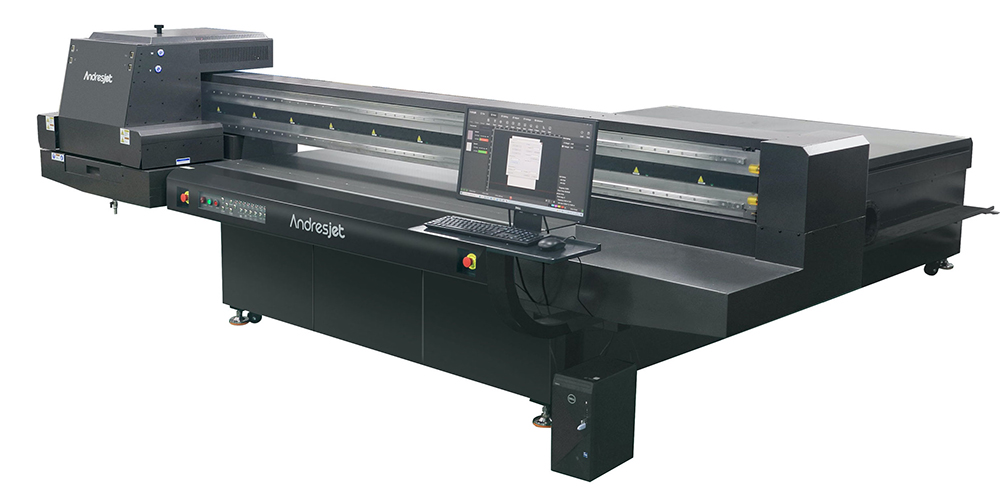UV Flatbed Printer: Common Myths Debunked
UV Flatbed Printer: Common Myths Debunked
In the realm of digital printing, UV flatbed printers have emerged as a game-changer, offering versatility, precision, and efficiency that traditional printing methods often struggle to match. However, like any innovative technology, UV flatbed printers have been subject to a series of myths and misconceptions that can cloud the understanding of even seasoned professionals. This article aims to debunk these common myths, providing a clearer picture of the capabilities, advantages, and limitations of UV flatbed printers.

Myth 1: UV Flatbed Printers Are Only Suitable for Small-Scale Productions
One of the most prevalent myths about UV flatbed printers is that they are primarily designed for small-scale or hobbyist applications. In reality, UV flatbed printers are highly scalable and can be utilized for both small and large-scale productions. Their ability to print directly onto various materials, including glass, metal, plastic, wood, and even leather, makes them ideal for a wide range of industries such as signage, furniture manufacturing, automotive customization, and product prototyping.
Moreover, advancements in technology have led to the development of industrial-grade UV flatbed printers that can handle high-volume printing with ease. These machines are equipped with larger print beds, faster printing speeds, and advanced automation features, enabling them to meet the demands of large-scale productions without compromising on quality.
Myth 2: UV Flatbed Printers Are Limited to Flat Surfaces
Another common misconception is that UV flatbed printers are restricted to printing on flat surfaces. While the name ‘flatbed’ may suggest this limitation, the truth is that these printers can accommodate a variety of surface contours and thicknesses. This flexibility is achieved through the use of adjustable print heads and, in some cases, vacuum beds that can securely hold objects of different shapes and sizes.
Furthermore, certain UV flatbed printers are equipped with rotatable print beds, allowing for cylindrical or conical objects to be printed upon. This adaptability extends the reach of UV flatbed printing into areas such as personalized water bottles, mugs, and even vehicle wraps, demonstrating the technology’s versatility beyond flat surfaces.
Myth 3: UV Flatbed Printing Is Not Cost-Effective
There is a persistent belief that UV flatbed printing is an expensive process, both in terms of initial investment and operational costs. While it is true that the upfront cost of purchasing a UV flatbed printer can be higher than some traditional printing methods, the long-term cost-effectiveness of this technology should not be underestimated.
UV flatbed printers eliminate the need for multiple steps and materials associated with traditional printing methods, such as screen preparation, plate making, and ink mixing. This reduction in process steps translates to significant time and cost savings, particularly for complex or high-volume printing projects. Additionally, the ability to print directly onto the final substrate often reduces material waste and the need for additional finishing processes.
Moreover, the durability and resistance of UV-cured inks mean that printed materials require less maintenance and have a longer lifespan, further contributing to the cost-effectiveness of UV flatbed printing over time.
Myth 4: UV Flatbed Printers Are Difficult to Operate and Maintain
Some individuals believe that UV flatbed printers are complex machines that require extensive technical expertise to operate and maintain. In reality, UV flatbed printers are designed with user-friendliness in mind. Manufacturers often provide comprehensive training programs for operators, ensuring they are equipped with the necessary skills to run the machines efficiently.
Furthermore, advancements in software and automation have simplified the printing process, allowing even novice users to achieve professional-grade results. Many UV flatbed printers also feature intuitive interfaces that guide users through the printing process, from file preparation to print execution.
Maintenance requirements for UV flatbed printers are also relatively straightforward. Regular cleaning of the print bed and print heads, as well as periodic checks on ink levels and print head alignment, are typically sufficient to keep the printer operating at optimal levels. Manufacturers often provide detailed maintenance schedules and recommendations to assist users in this regard.
Myth 5: UV Flatbed Printing Is Not Environmentally Friendly
Lastly, there is a misconception that UV flatbed printing is not an environmentally friendly process. This belief is largely based on the assumption that UV inks contain harmful chemicals and that the curing process consumes excessive energy.
In reality, UV inks are formulated to be low in volatile organic compounds (VOCs) and are cured instantly upon exposure to UV light, reducing the need for solvents and drying time. This not only minimizes emissions but also consumes less energy compared to traditional drying methods. Additionally, many UV ink manufacturers are now producing eco-friendly ink options that are either recyclable or biodegradable, further enhancing the environmental sustainability of UV flatbed printing.
Moreover, the reduction in material waste and the ability to print directly onto the final substrate without the need for additional finishing processes contribute to a more sustainable printing process overall.
Conclusion
UV flatbed printers have revolutionized the digital printing industry, offering versatility, efficiency, and cost-effectiveness that traditional methods cannot match. By debunking these common myths, it is clear that UV flatbed printing is not limited to small-scale productions, flat surfaces, or excessive costs. Nor is it a complex technology to operate and maintain, nor is it unfriendly to the environment. As technology continues to advance, UV flatbed printers will likely play an even more significant role in shaping the future of digital printing.
